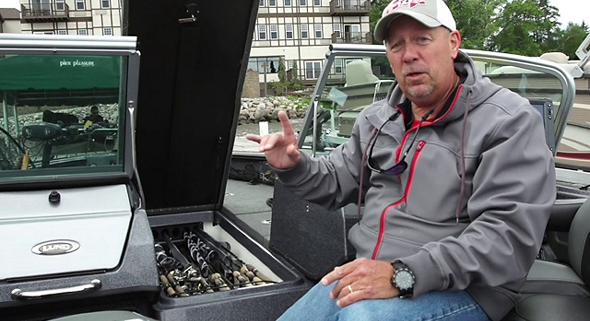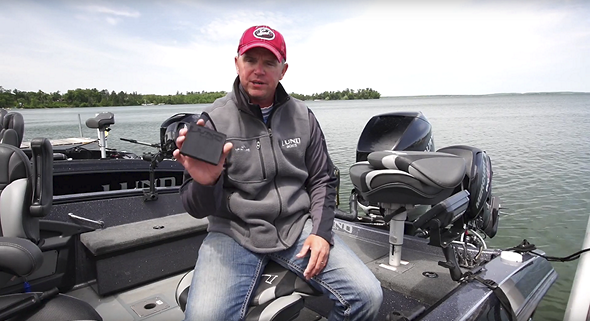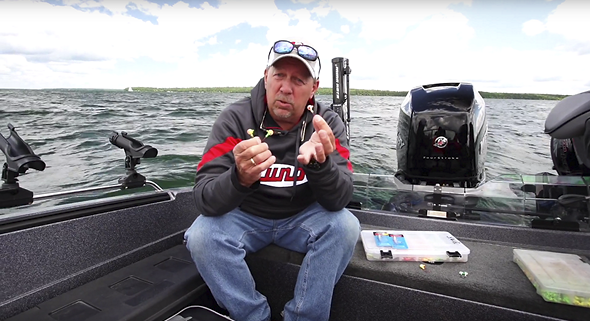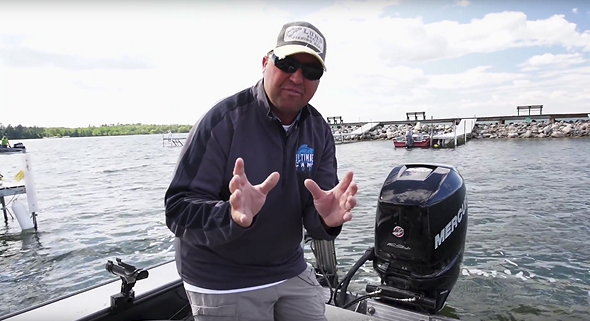Ultimate Jig Fishing Tips to Catch More Bass
We tap Jeff “Gussy” Gustafson, 2023 Bassmaster Classic Champion and Lund Boats pro, to get the latest on the best jig fishing tips and techniques for bass.

Three Bass Jig Presentations You Need To Be Fishing
Jigs, designed to mimic the movements of prey such as small fish or insects, have a long-standing track record for successfully getting fish on the hook. These versatile lures are essential tools in the arsenal of anglers like Lund Boats pro and 2023 Bassmaster Classic Champion, Jeff “Gussy” Gustafson. We caught up with him for the lowdown on today’s best bass jig fishing techniques. Without hesitation, he listed the following three presentations as essentials he keeps rigged and ready in his 2075 Pro-V Bass XS rod locker whenever he’s bass fishing.
Catching Bass Using A Jig And Soft-Plastic Minnow
“A jig and plastic minnow is the hottest bait in the country in 2024 by far. It’s already accounted for many national-level tournament wins… and there’s probably no better bait to use in conjunction with forward sonar.”
What is it?
Casting a 3—to 5-inch soft plastic minnow rigged on a jig is an excellent tactic for catching smallmouth, largemouth, and spotted bass across North America. The tactic works on bass in shallow to deep water, especially when they're feeding on suspending baitfish.
Realism matters with this rig. Gussy’s winning combo is Z-Man’s Scented JerkShadZ on a Northland’s lifelike Smeltinator jig head in a corresponding natural color.
How to fish it?
When casting to fish marked on forward-facing sonar, Gustafson studies the position of his bait on the graph’s display, adjusting the retrieve always to keep the JerkShadZ above fish. This helps the bait get noticed by up-feeding bass. The elevated bait also forces interested fish to swim up for a closer look; once you get a fish chasing, the chances are much better it’ll bite compared to dropping a minnow right on their nose.
Using this technique, a slow swimming retrieve is a good place to start when learning how to catch bass. Light shakes, nods of the rod, and slight drops add variety and can trigger strikes.
Choosing the right jig weight maximizes the JerkShadZ time in the strike zone. Gustafson uses a 1/8-ounce Smeltinator when fishing less than 10 feet, a 1/4 ounce for 10 to 20 feet and 3/8 ounce for depths beyond 20 feet.
This technique often requires making long, accurate casts. To accomplish this, Gustafson fishes a jig and soft plastic on thin,10-pound PowerPro braid with a 10-pound fluorocarbon leader and a 7’3” G. Loomis NRX+ 872 Jig & Worm medium power spinning rod .
Using traditional 2D sonar while vertically fishing this same rig above bass (aka hanging a minnow) is also potent. Something Gustafson demonstrated when using the tactic to win a Bassmaster Elite event on the Tennessee River in 2022 and, to a degree, his Classic win on the same fishery the following year.
Catching Bass Using Swim Jigs
“Last year, I probably weighed in more fish throughout the Elite Series season on a swim jig than anything else. They work anytime smallmouths and largemouths are around shallow water and shallow cover.”
What is it?
Although similar in appearance to a traditional skirted bass jig, a swim jig has a streamlined head with a pointed nose and a front-line tie and is weighted specifically for swimming retrieves. Combined with a brush guard, this design makes a swim jig extremely snag-resistant and an effective tool for covering water in and out of reeds, grass, wood, and other cover where big bass lurk.
Gustafson outfits a swim jig with either a double-tail grub or a small swimbait trailer. Each option adds action and vibration without compromising the jig’s subtle, natural appearance. He likes green pumpkin for mimicking crayfish and sunfish and white to mimic shad and herring.
How to fish it?
“What I like to do is reel the swim jig fast and steady, keeping it high in the water column where bass can see it,” Gustafson said. “I like to shake it while I’m reeling it to make the skirt pulse.”
The Bassmaster Champ doesn’t just chuck and wind on autopilot, though. He’s aiming at targets and purposely swimming the jig along edges and through other ambush areas.
He stops reeling when the swim jig passes over a hole within a grass bed. Letting the jig fall into the hole often produces big bites, he says.
Gustafson uses 3/8-ounce swim jigs the most but favors 1/2 ounces when it’s windy and 1/4 ounces for skinny water four feet or less. Swim jigs are fished on 40-pound PowerPro braid and 7’5” G. Loomis NRX+ 893 medium-heavy casting rod.
Catching Bass on Vibrating, Bladed Bass Jigs (aka ChatterBaits)
“ChatterBaits have been around for a while, but they are sometimes overlooked by smallmouth anglers. At last year’s Elite event on Lake Ontario I caught my biggest fish on a ChatterBait.”
What is it?
Similar to a swim jig, a bladed bass jig is a horizontal presentation, but a key distinction between these lures is a vibrating jig has a free-swinging blade on its head. The blade produces vibrations and gives the lure an erratic, hunting action.
Gustafson’s top picks are Z-Man’s JackHammer and Elite EVO ChatterBaits outfitted with a Razor ShadZ trailer. He follows a similar approach for ChatterBait color selection as swim jigs, adding white is preferred in dirty water for its visibility.
How to fish it?
Gustafson likes a ChatterBait because it’s an “aggressive lure” excellent for covering water and getting reaction strikes. Effective in various conditions, it’s hard to go wrong throwing this bait around bass habitat between 2 to 10 feet when it’s windy.
Retrieve the lure just fast enough to feel steady vibrations. He uses a mid-speed reel for ChatterBaits, favoring Shimano’s Curado 150 baitcaster with a 6.2 gear ratio.
When fishing grassbeds, ticking the top of weeds with a ChatterBait can get a fish’s attention. Although purposely submarining the lure into vegetation, then ripping it free will elicit reaction bites.
Gustafson most often uses a 1/2-ounce ChatterBait, which swims between 4 to 8 feet. He switches to 3/8-ounces for a higher retrieve, while a 3/4-ounce ChatterBait gets tied on when deeper swimming depths are desired or when he’s fishing in windy conditions. These are fished on 20-pound fluorocarbon using a G. Loomis IMX Pro 883 BJR medium-heavy, fast action casting rod.
The presentations described above provide Gustafson with a trio of versatile jigs, which can catch bass across North America throughout the year.
“Luckily, in the Pro-V Bass, I can stuff 20-plus rods in my rod locker, and I’m able to carry a lot of tackle, so all that stuff just stays in the boat year-round,” the Lund Boats Pro and 2023 Bassmaster Classic Champion said.
Get Updates
Sign up for our newsletter



